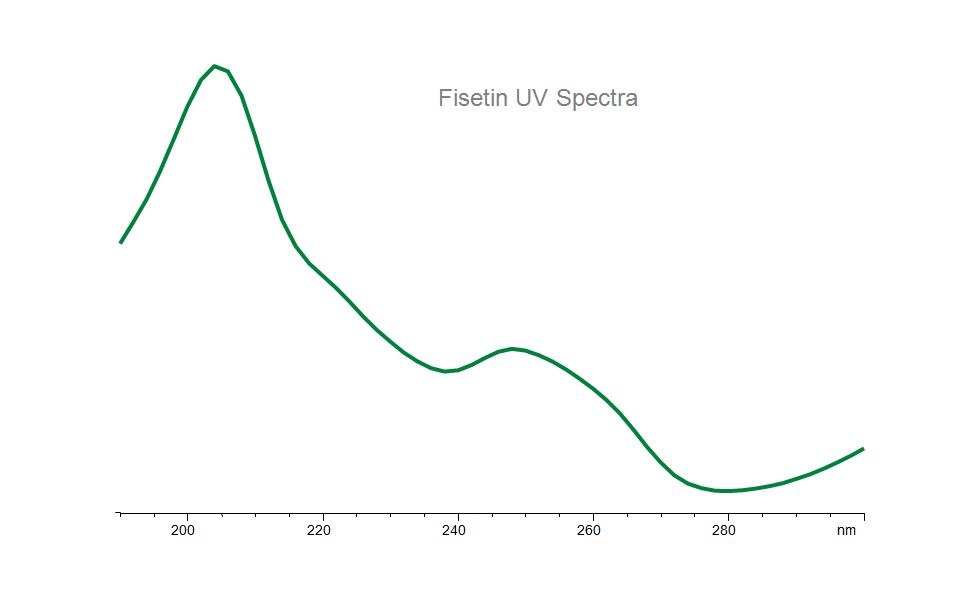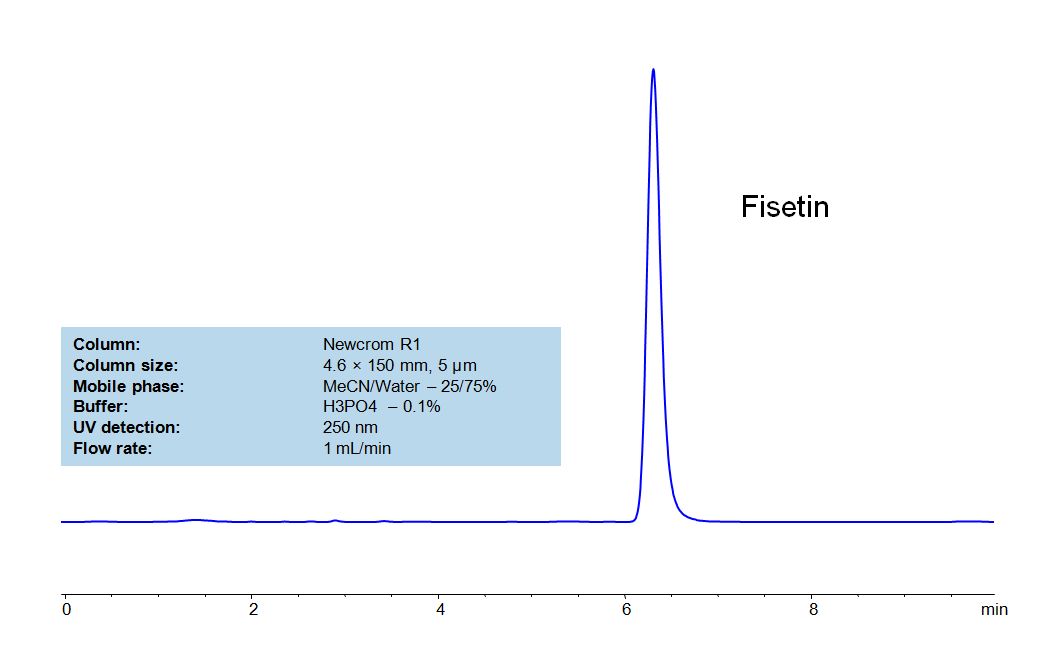| CAS Number | 528-48-3 |
|---|---|
| Molecular Formula | C15H10O6 |
| Molecular Weight | 286.239 |
| InChI Key | XHEFDIBZLJXQHF-UHFFFAOYSA-N |
| LogP | 2 |
| Synonyms |
|
Applications:
HPLC Method for Analysis of Fisetin
October 10, 2018
HPLC Method for Fisetin on Newcrom R1 by SIELC Technologies
High Performance Liquid Chromatography (HPLC) Method for Analysis of Fisetin
Fisetin, is a plant polyphenol from the flavonoid group. It can be found in many plants, where it serves as a coloring agent. It is also found in many fruits and vegetables, such as strawberries, apples, persimmons, onions and cucumbers. Fisetin is a natural flavonoid with various benefits, such as antioxidant, anticancer, neuroprotection effects.
Fisetin can be retained and analyzed using the Newcrom R1 stationary phase column. The analysis utilizes an isocratic method with a simple mobile phase consisting of water and acetonitrile (MeCN) with a phosphoric acid base. Detection is performed using UV.
| Column | Newcrom R1, 4.6 x 150 mm, 5 µm, 100 A, dual ended |
| Mobile Phase | MeCN/H2O – 25/75% |
| Buffer | H3PO4 – 0.1% |
| Flow Rate | 1.0 ml/min |
| Detection | UV, 250 nm |
| Class of Compounds |
Hydrophobic, Ionizable, Coloring agent, Polyphenol |
| Analyzing Compounds | Fisetin |
Application Column
Newcrom R1
Column Diameter: 4.6 mm
Column Length: 150 mm
Particle Size: 5 µm
Pore Size: 100 A
Column options: dual ended





